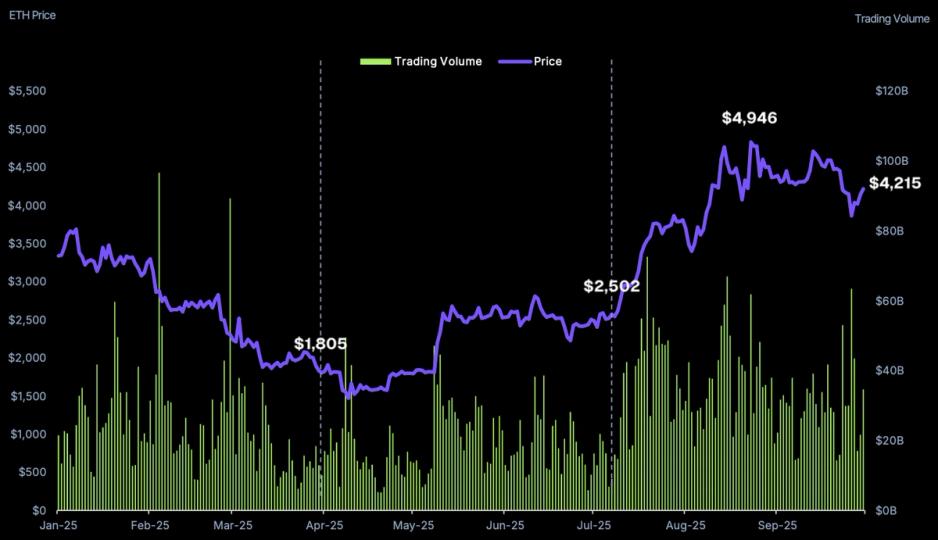Ethereum emerged as the frontrunner in crypto’s third-quarter rally, leaving bitcoin behind behind, as capital poured into altcoins, DeFi protocols and a new wave of tokenized assets, a report from CoinCecko found.
The broader market added over half a trillion dollars in value, its second consecutive quarter of meaningful growth, but this time it wasn’t bitcoin leading the charge. Instead, investors looked to ethereum and other large-cap tokens to carry momentum forward, a report from CoinCecko found.
At the start of July, it seemed that bitcoin would once again set the pace. Its price hit new highs at the start of the quarter, supported by retail interest and institutional access through spot exchange-traded funds (ETFs).
But by September, the narrative had changed. As bitcoin cooled, ether caught fire.
A combination of ETF demand, growing interest in real-world tokenized assets, and renewed attention from corporate treasuries helped ETH reach a new all-time high before falling back.
That shift in focus was one of the quarter’s defining trends, analysts at CoinGecko wrote.
Trading activity, which had fallen for two consecutive quarters, bounced back strongly. Spot volume increased across centralized and decentralized exchanges. But the story wasn’t just about volume, it was about where that volume was going.
Meme coins, long considered fringe, made a dramatic comeback with tokens like M climbing the charts. Stablecoins such as USDe gained prominence, and lesser-known altcoins entered the top 30 by market capitalization. DeFi, which had disappeared from the limelight in late 2024, made a comeback as the total value locked in lending and staking protocols increased along with Ethereum’s rise, according to the report.
A shift in investor appetite
Behind the scenes, structural shifts took shape.
Bitcoin’s share of the overall crypto market fell, a sign that investor appetites had shifted toward other narratives. Ethereum gained ground, but so did categories that had struggled to break through in previous years, notably tokenized assets.
A new generation of on-chain stocks and bonds began to take hold, and protocols such as Ondo and Backed Finance gained traction with investors seeking to bridge the gap between traditional and decentralized finance.
Bitcoin also became less tied to legacy markets. Its price movement decoupled from the S&P 500 for the first time in over a year. That could be read as a positive, the report stated, and evidence that crypto is becoming a more independent asset class. But it also reflects how investors’ attention is fragmented, the report states.
Even the mining sector reflected this changing dynamic. Bitcoin’s hash rate hit record highs, and miner-focused ETFs posted strong returns.
However, the spotlight was elsewhere: on new tokens, Ethereum’s momentum and the rebirth of DeFi, the report found.



